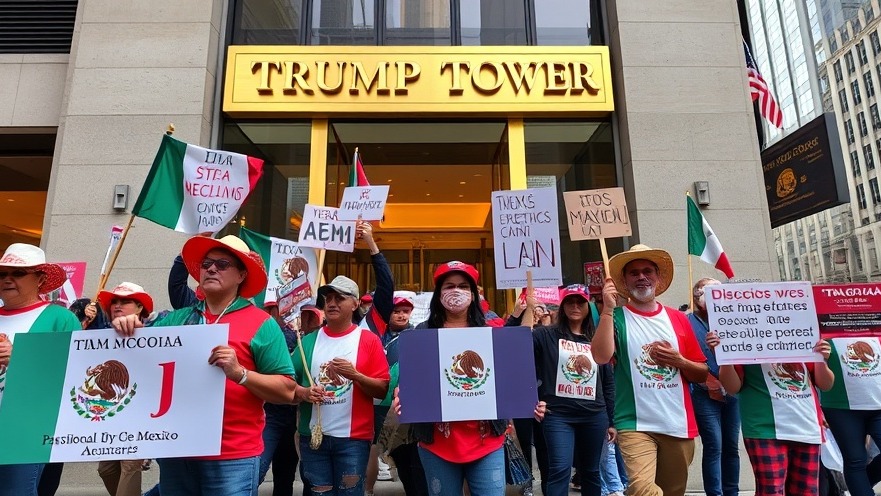
Nationwide Protests Highlight Frustration Over Immigration Policies
The recent surge in anti-ICE (Immigration and Customs Enforcement) protests culminated in a tense standoff at Trump Tower in New York City, as demonstrators demanding the humane treatment of illegal aliens interrupted a busy afternoon with chants of "Bring Them Back." This outcry is part of a much larger series of nationwide demonstrations against aggressive immigration policies, which have seen significant backlash from communities across the United States. As anger grows over the treatment of deported individuals, cities are witnessing an awakening of activism aimed at reshaping public discussions surrounding immigration and illegal alien status.
History of Anti-ICE Protests
From its inception, the anti-ICE movement has been fueled by stories of families torn apart, and individuals sent back to dangerous situations. The protests have targeted not just ICE offices but also symbols of perceived injustice—like Trump Tower. This locale has become a focal point not only for those opposing the treatment of immigrants but also as a symbol of the broader struggle against policies that many view as draconian. Historical parallels can be drawn to the civil rights movements of the 1960s, where passionate activists sought to challenge systemic injustice. Just like those rallies aiming for equality, today's protests strive for a more compassionate immigration approach.
Diverse Perspectives on the Issue
As with any contentious issue, there are multiple viewpoints regarding the protests and the policies they aim to challenge. Supporters of ICE argue that immigration laws must be enforced to maintain order and security, often citing incidents of crime and drug trafficking as justification for stringent measures. Conversely, opponents assert that the current approach to immigration fosters fear and separation, often leading to tragic personal consequences. As people rally for immigrant rights, these protests create a platform for nuanced discussions, shaking the very foundations of how immigration is perceived and handled in the U.S.
Local Impact and Reactions
The protests are not merely confined to urban areas such as New York City; similar demonstrations have erupted across the country. Cities such as Los Angeles, Chicago, and Washington D.C. are experiencing renewed activism against ICE, mobilizing community leaders and everyday citizens alike. Local officials are faced with a dual responsibility: addressing the immediate concerns of their constituents while navigating often divisive national immigration policies. This reflects an overarching need for comprehensive immigration reform, as echoed by many local leaders amid these protests.
What Lies Ahead: Future Predictions
Experts predict that the demonstrations will not fizzle out, but rather evolve, keeping immigration policies at the forefront of national conversation. Activists are strategizing ways to not only challenge ICE but also to campaign for legislative changes that protect vulnerable illegal alien communities. The public's growing awareness of these issues can lead to a shift in political dynamics, potentially influencing local and national elections.
Final Thoughts: Why This Matters
For the target audience—those aged 25 and over, across gender divides—the issue of legal immigration transcends legal frameworks, touching on human rights and ethical considerations. Understanding the layers behind these protests matters. It invites us to confront notions of justice, equality, and compassion in our togetherness, which ultimately reflects our values as a society. As anti-ICE protests gain momentum, they serve as a reminder that citizens have the power to influence policies and advocate for change.
 Add Element
Add Element  Add Row
Add Row 



 Add Row
Add Row  Add
Add 


Write A Comment